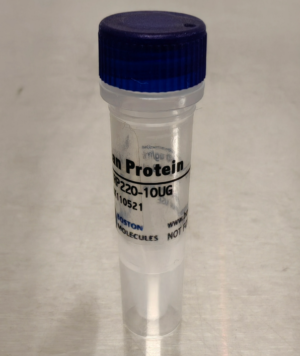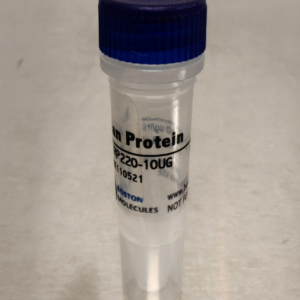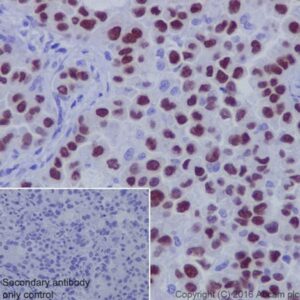Mouse VEGFA, 1 mg
Mouse VEGFA, 1 mg
Mouse vascular endothelial growth factor A; Vascular permeability factor; Vasculotropin; VEGF; VEGFA; VEGF-A; VEGFMGC70609; VPF; VPFvascular endothelial growth factor
$5,600.00
VEGF is a potent growth factor that promotes both angiogenesis and vascular permeability. It acts on endothelial cells by signaling primarily through two VEGF receptors, VEGF R1 (also called Flt-1) and VEGF R2 (Flk-1/KDR). VEGF expression is induced by hypoxia and cytokines such as IL-1, IL-6, IL-8, oncostatin M and TNF-alpha. Structurally, VEGF is a member of the PDGF family that is characterized by the presence of eight conserved cysteine residues and a cystine knot structure. Humans express multiple alternately spliced isoforms resulting in polypeptides that are 121, 145, 165, 183, 189, and 206 amino acids (aa) in length. VEGF signals by binding to the type I transmembrane receptor tyrosine kinases VEGF R1 (also called Flt-1) and VEGF R2 (Flk-1/KDR) on endothelial cells. Although VEGF affinity is highest for binding to VEGF R1, VEGF R2 appears to be the primary mediator of VEGF angiogenic activity (1-5).




Reviews
There are no reviews yet.